Effect of Cover Crop Termination Timing and Tillage Practice on Corn Production
March 22, 2023
TRIAL OBJECTIVE
- Benefits of cover crop growth can be altered by the timing of termination in conjunction with tillage practice.
- Cover crop biomass can help with weed suppression, and conservative tillage such as no-till and strip-till helps maintain soil moisture.
- The objective of this trial was to determine the interaction between cover crop termination timing and tillage practice and their effects on (1) early and late corn stands, (2) weed suppression, and (3) corn yield potential.
RESEARCH SITE DETAILS
| Location | Gothenburg, NE |
| Soil Type | Hord silt loam |
| Previous Crop |
Soybeans |
| Tillage Type |
Strip-tillage and no-till |
| Planting Date | 05/26/2022 |
| Harvest Date | 11/10/2022 |
| Potential Yield (bu/acre) |
240 |
| Seeding Rate (seeds/acre) |
36,000 |
- This trial was designed as a split plot with cover crop termination timing as the whole plot and tillage practice (strip-till or no-till) as the subplot.
- The cover crop species planted was winter wheat, which was drilled at 120 lbs/acre on 11/09/2021.
- On 04/12/2022 the trial received a base fertilizer application of 29 lbs of nitrogen (N)/acre), 60 lbs of phosphorus (P2O5)/acre), 25 lbs of sulfur (S)/acre), and 0.25 lbs Zinc (Zn)/acre). The fertilizer was applied with a strip-till machine in the strip-tilled plots and banded on the soil surface of the no-till plots.
- Cover crops were terminated with Roundup PowerMAX® herbicide at 32 fl oz/acre with a spray volume of 15 gallons/acre.
- Corn was planted in 30-inch rows, at 1.5 inches deep using a 4-row precision planter operated at 3 mph.
- Each termination timing of 1, 3, and 5 weeks before planting (WBP) was paired with no-till and strip-till (Table 1).
- Pre-plant, burndown, and post-emergence herbicide applications are listed in Table 1 and were the same across treatments. Cover crop termination timings were different across treatments (Table 2).
Table 1. Herbicide applications made during the 2022 growing season.
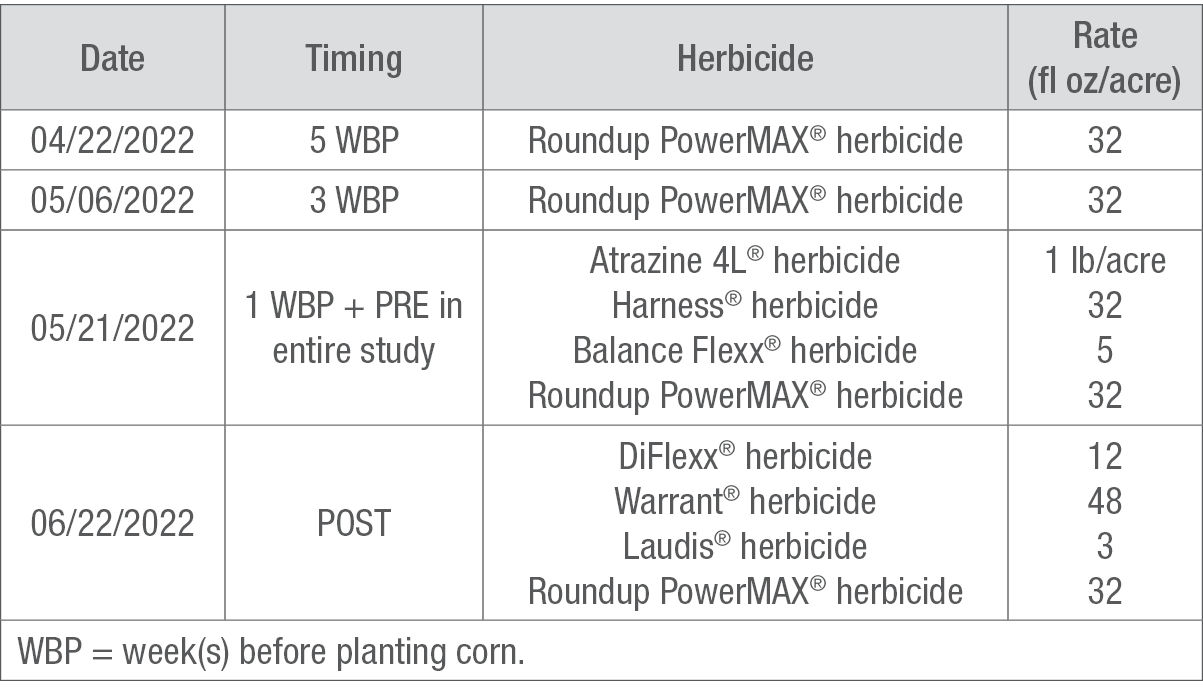
Table 2. Treatments with cover crop termination timings and tillage practice treatment combinations.

- Nitrogen was sidedressed across all plots using 360 Y-DROP® nozzles at a rate of 150 lbs/acre on 06/23/2022.
- A total of 6.65 inches of precipitation accumulated during the corn growing season and 9 inches water were applied by sprinkler irrigation.
- Weed suppression and early corn stand counts were assessed when corn reached the V5 growth stage. Late corn stand assessment notes were recorded close to corn harvest time.
- The trial was harvested with a plot combine, measuring grain moisture content, test weight, and total grain weight to determine yield.
UNDERSTANDING THE RESULTS
- Cover crop termination timing affected early stand counts of corn at V5 growth stage. The 1 WBP termination timing reduced corn plant stands by 1,063 and 850 plants/acre from 3 WBP and 5 WBP, respectively (Figure 1). The corn early stands reduction for the 1 WBP treatment could be from the increased cover crop residue interfering with corn emergence.
- Late stand counts of corn were not affected by the cover crop termination timing. This could be due to count variability, corn seedlings that may have emerged later for the 1 WBP termination treatment (Figure 1), or some corn plants that could be lost in the early termination timings (3 and 5 WBP) during the growing season.
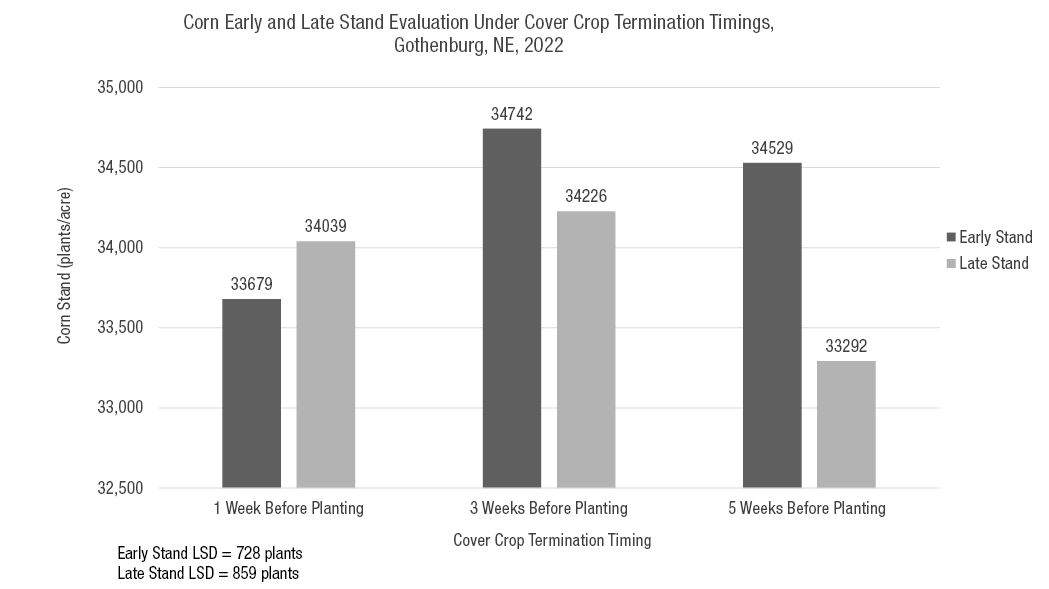
Figure 1. Early and late corn stand evaluation under different cover crop termination timings.
- Tillage practice affected early and late corn stands. No-till treatments, compared to strip-till treatments, had reduced early and late corn stands of 1,771 and 1,079 plants/acre, respectively (Figure 2). The higher corn stands observed in strip-till treatments compared to no-till could be due to the improved quality of seed beds (Figure 2).
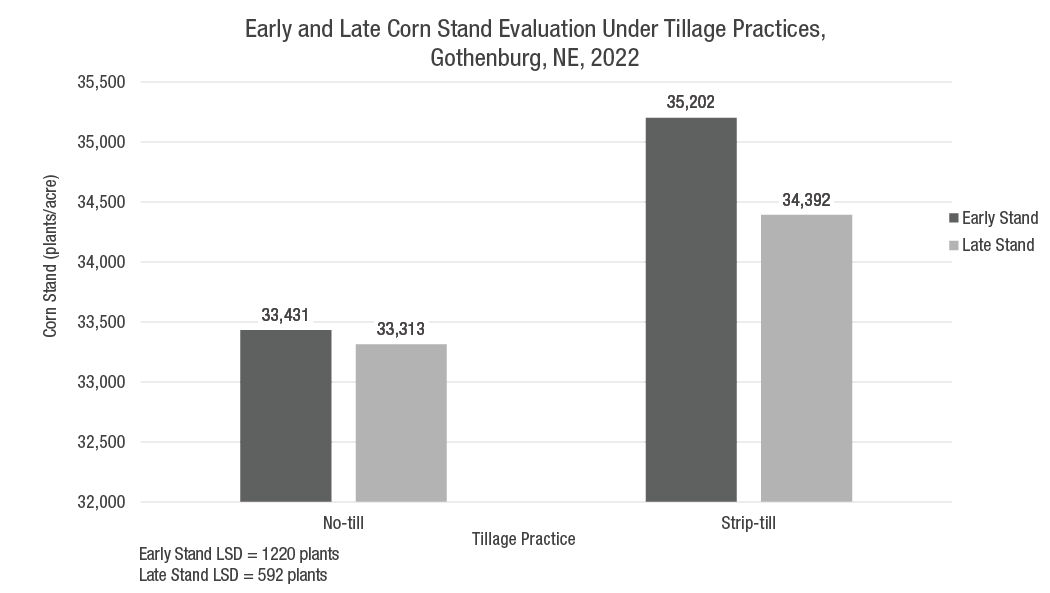
Figure 2. Early and late stand evaluation under different tillage practices.
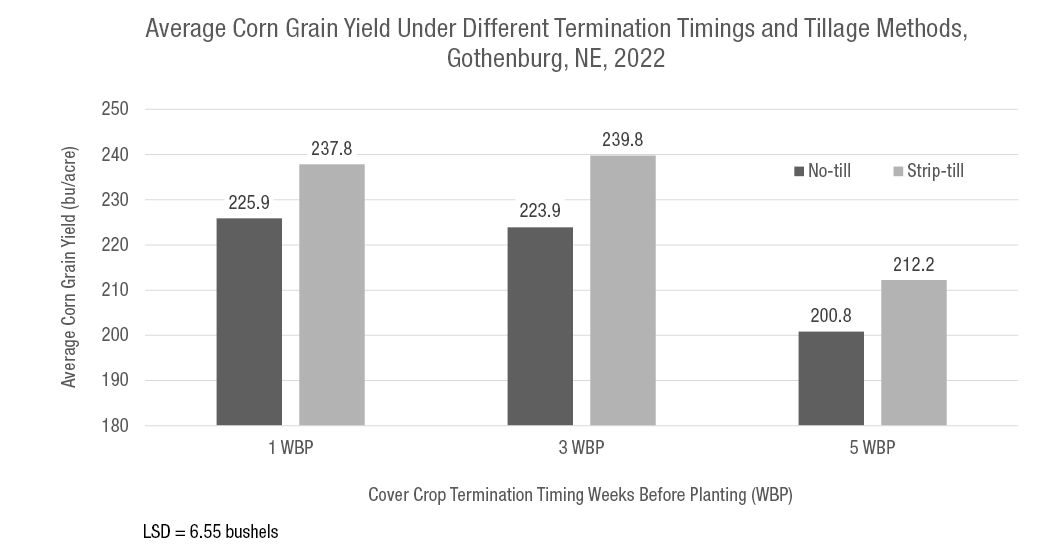
Figure 3. Average corn grain yield under three cover crop termination timings and tillage practices.
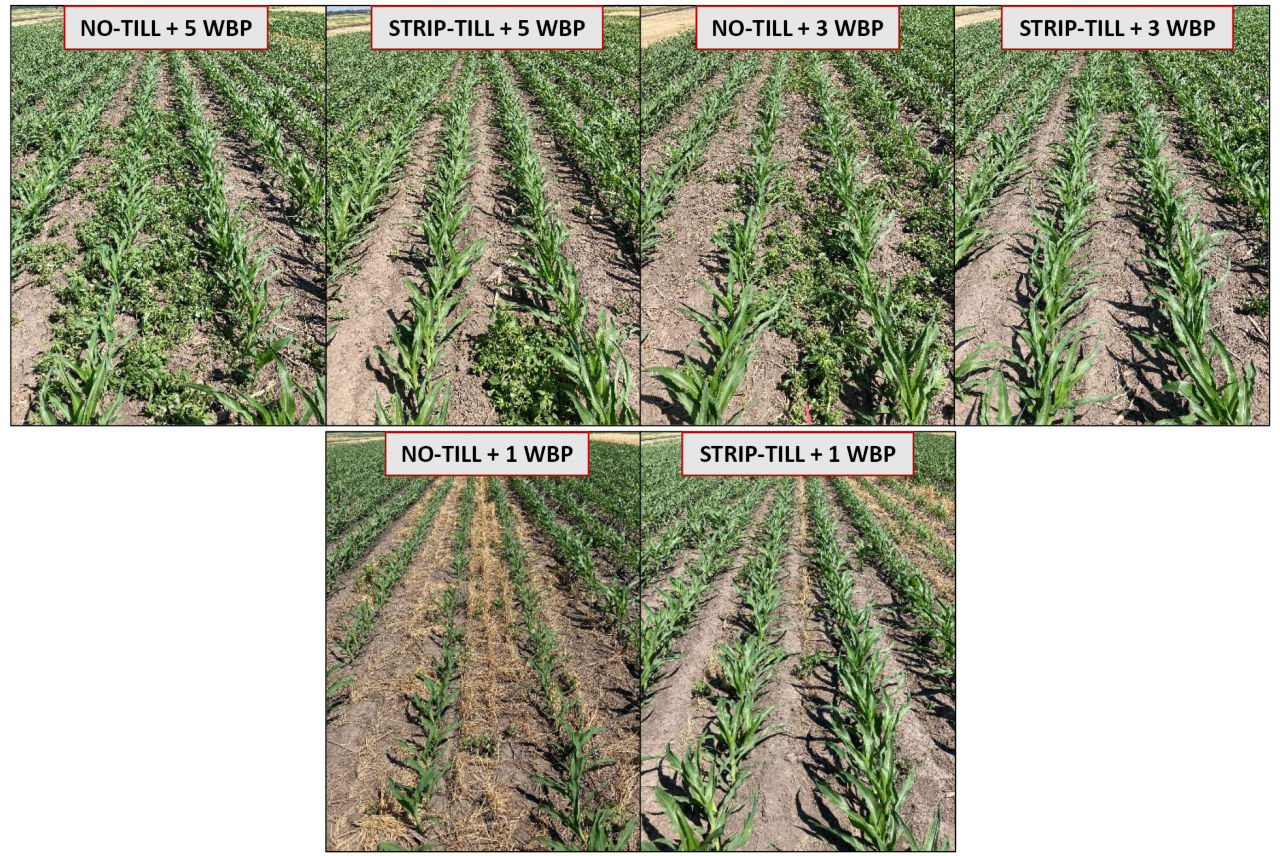
Figure 4. Cover crop termination timings and tillage practice treatments in corn at the V6 growth stage. Pictures were taken on 06/23/2022 at the Bayer Water Utilization Learning Center near Gothenburg, NE. WBP = week(s) before planting corn.
- The interaction of cover crop termination timing and tillage practice had a significant effect on yield; however, these factors alone did not affect yield potential (Figure 3).
- The strip-till treatments showed corn grain yield advantages over the no-till treatments of +15.9 bu/acre for 3 WBP, +11.9 bu/acre for 1 WBP, and 11.4 bu/acre for 5 WBP (Figure 3). The greater yields in strip-till treatments compared to no-till treatments could be due to the increased corn stands (Figure 4).
- During the growing season, nitrogen could have been tied up by cover crop residue making it unavailable for corn plants. Strip-till plots received sub-surface fertilizer whereas no-till was banded on the surface. In a dry year like 2022, this could be another reason why strip-till treatments performed better than no-till treatments.
KEY LEARNINGS
- Strip-till helped manage cover crop residue and promoted early crop growth with better early corn stands, without losing the benefits of the cover crop.
- Cover crops were beneficial in this study. Cover crops did not grow much due to dry spring weather which helped reduce the risks of overgrowth affecting the following crop. This likely helped the 1 WBP and 3 WBP termination timings have greater yield potential.
- Under irrigation, there is more flexibility on when to terminate a cover crop prior to corn planting.
1210_199235